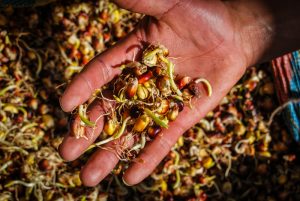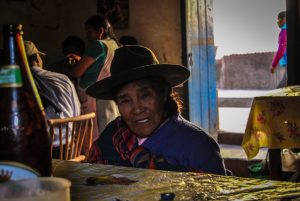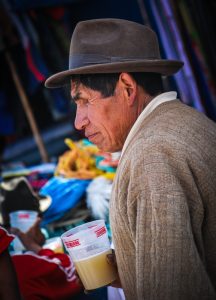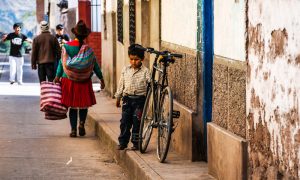Food, Drink and Fun in Limatambo

Some seventy-eight kilometers from the city of Cuzco, and far below it, lies a charming town worth a visit, Limatambo. The road, after crossing the wide valley of Anta, above which the two snow covered peaks of Salkantay and Veronica, hold court, you climb up a small pass and then start a long, tightly curving descent into the midst of the deep valley below.
Along the way, you see a constantly changing panorama of mountains and fields, with changing vegetation. Occasionally a snowy peak shines on top of the hills. After about forty minutes of sinuous descent you arrive at the pueblo of Limatambo.
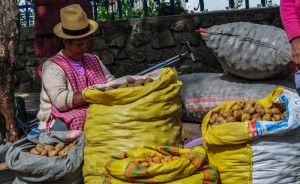
The town, at first glance just seems a stretch along the highway that connects Cuzco with Abancay and then the national capital of Lima. But up a staircase, or a narrow road marked by a buss stop with three brightly dressed crosses, you enter a town of narrow streets with a medium sized Plaza and a modern municipal building.
The climate is warm, although temperate. This is not the low valleys of the jungle, like around Quillabamba, but is a higher and dryer valley where the specialty grown by the farmers is avocado. In fact, Limatambo is called the paradise of avocado, called palta here.
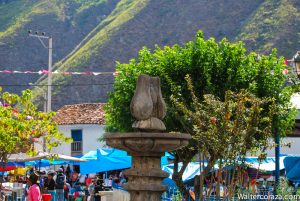
On Sundays and Wednesdays the main square fills with people and stands as a market opens. We call the market here a feria, or fair. Not only are there people from the area offering agricultural produce, but also traveling merchants bringing produce from far away. You could also look at stands of clothes, household goods, agricultural implements, and more.

You will see long tables of people drinking fresh chicha or frutillada. To their side are twin lines of women, stretching all long one side of the plaza cooking and offering fresh dishes of food to passersby. At one stand chicharron, pork, is frying in fat, while at another aniticuchos sizzle on a grill. A girl washes fresh mint under running water from the municipal tap. The smells and sounds of food are intense.
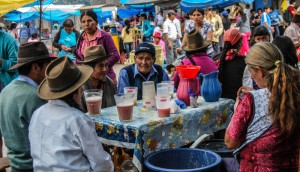
As you walk up and down the rows of vendors of prepared food, they will call out and name the dishes they have. Some said they cooked foods that they offered things that were not traditional, but unique to them because people often wanted something different. While talking about this with her clients, one vendor said that next week she would bring salpicon of chicken. A woman asked her to bring olluco with jerky.
After walking up and down the row of vendors and looking at what they offered, we decided to sit at the stand of one woman on a long bench in front of her pots and next to an open air wood fired stove. I chose to try her aji de gallina. Though not as yellow as the sauce served in Cuzco, the aji tasted much like in Cuzco. Rather than finely shredded its chicken was more chunked, but the flavor was very good. The aji was served on boiled potatoes with a serving of rice to the side. The rice was well prepared and had a good flavor.
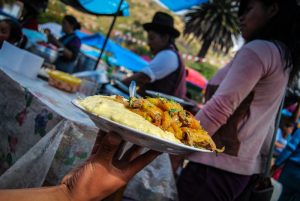
My colleagues chose to eat lomo saltado accompanied by a cream of tarwi, an indigenous grain related to the lupine. The tarwi was absolutely delicious and very satisfying. The lomo saltado was made in the old way in which the french fries are mixed in with the meat, onions, tomatoes and sauce. It was tasty and like many lomo saltados you get in Cuzco in similar circumstances.
To add to both dishes we were offered a relish of diced onion and rocoto peppers, with a splash of lime juice and salt, if we wished to make our dishes a bit spicier.
By eating on the street, in the midst of the Sunday market, we were one with the ordinary people of Limatambo who were there eating side by side with us. Inevitably we were asked where we were from and conversations ensued.
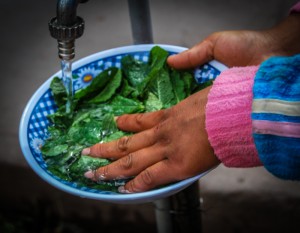
All the streets and sidewalks around Limatambo´s plaza were filled with the fair, but the plaza itself with its bright flowers and leafy trees and benches instead had people walking around, talking, and sitting while enjoying the day. In the middle there was a fountain where the water came out of a cement avocado split in the middle, while at the bottom the fountain was sustained by two cougars.
Since the sun shone bright and hot, even though the air contained a bit of chill, a glass of fresh chicha was perfect. You could have one at one of the large tables in the plaza, or you could enter one of the town´s chicherìas.
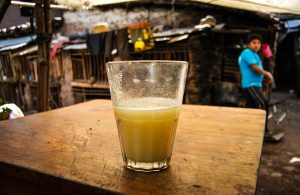
Finally, it was impossible to resist the temptation to drink a large glass, called caporal, of chicha, so I (Walter) went into one of the chicherìas, the local restaurants that specialize in chicha. The place had several large tables where people sat, laughing and drinking.
Once I had sat down, they brought me a caporal filled with chicha. I poured the first drops to the earth mother. The I tasted it. The flavor was so good that it left me speechless. It was a good, fermented, natural juice of sprouted corn that had a good balance. Its flavor was superbly subtle.
While there, I asked myself why people drank so much chicha. Here it was early int he day and people were drinking it, while in the city of Cuzco it tends to be saved for the late afternoon. I realized that the people of Limatambo drink chicha together because it helps them stay in harmony.
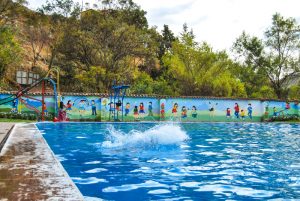
Below the highway, next to the river that runs down the center of the canyon, Limatambo has a beautiful public pool. While the water is cold, it sparkles and is blue. There is no cost to swim. After walking around in the sunshine, it is great to take a dip in the chilly water to refresh yourself before the drive up-mountain to the city of Cuzco.
It is worth leaving Cuzco to visit the towns and valleys, as well as mountains near it. Of these Limatambo is a charm and easy to get to. It is beautiful and warm. The only problem are the mosquitos of the lowlands. You should probably take some repellent. Then you will completely enjoy your stay.
